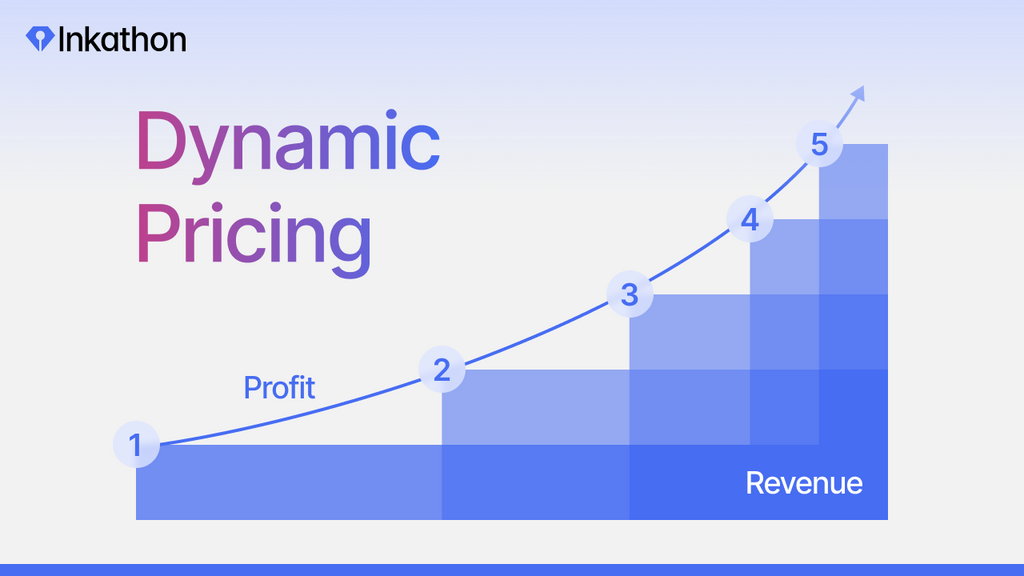Maximizing Revenue & User Satisfaction with Dynamic Pricing in eCommerce

In the ever-evolving world of eCommerce, businesses constantly seek innovative strategies to stay competitive and maximize their revenue. One such strategy that has gained significant traction is dynamic pricing, which involves adjusting product prices in real time based on various factors such as demand, competition, and customer behavior. The integration of artificial intelligence (AI) into dynamic pricing has revolutionized the eCommerce landscape, enabling businesses to optimize their pricing strategies and enhance customer satisfaction. This article explores the concept of dynamic pricing in eCommerce with AI and its profound impact on businesses and consumers alike.
The power of dynamic pricing
It's been estimated that 81% of consumers conduct online research before making a purchase to compare price differences and extra costs. Influenced by the airline industry, dynamic pricing is a pricing strategy that allows businesses to set flexible and adaptive prices for their products or services. Major brands like Google, Amazon, Airbnb, and Uber have pivoted their pricing strategies into real-time models and infused them into their long-term business plans. So how do they do that? The answer is Artificial Intelligence! By leveraging AI algorithms and machine learning techniques, businesses can analyze large volumes of data, identify patterns, and make informed pricing decisions to achieve their goals, whether it's maximizing revenue, increasing market share, or improving customer satisfaction. Unlike fixed pricing models, dynamic pricing takes into account real-time market conditions, customer preferences, and other relevant factors to determine optimal pricing.
Enhancing revenue generation
One of the primary objectives of dynamic pricing in eCommerce is to maximize revenue. AI plays a crucial role in achieving this goal by enabling businesses to dynamically adjust prices based on market demand and competitor pricing strategies. By analyzing historical sales data, market trends, customer behavior, and competitor prices, AI algorithms can identify pricing patterns and make precise predictions about price elasticity and customer response. This allows businesses to optimize prices, offer competitive deals, and capture the maximum value from each customer transaction, leading to increased profitability and revenue generation.
in 2013, by changing its prices every 10 minutes for its product catalogs of 1.5 billion products, Amazon has been changing its prices approximately 2.5 million times a day. Their sellers can constantly track the market competition and decide to change their product prices accordingly. This competitive strategy boosted Amazon sales by 25% and made it one of the first e-commerce brands to tap into customer insights using big data.
Personalized pricing and customer satisfaction
AI-powered dynamic pricing allows businesses to personalize prices based on individual customer preferences and behaviors. By analyzing customer data, such as purchase history, browsing patterns, and demographic information, AI algorithms can segment customers and offer personalized discounts, promotions, or loyalty rewards. Airbnb is a major example of a brand using a rigorous dynamic pricing strategy to improve its revenue from a decrease in sales by 31% to an increase of 73% in 2021, which accounted for 5.9 billion after the hit during the pandemic. This personalized pricing approach not only enhances customer satisfaction but also fosters loyalty and encourages repeat purchases. Customers feel valued and appreciated when they receive tailored pricing offers, which in turn strengthens their relationship with the business and drives long-term customer loyalty.
Real-time market adaptation
The eCommerce landscape is dynamic and ever-changing, with fluctuating market conditions and intense competition. Static pricing models often struggle to keep up with these changes, potentially leading to missed revenue opportunities or loss of market share. However, with AI-powered dynamic pricing, businesses can adapt to market changes in real time. Allowed brands to place their ads on the relevant platforms together with constant optimization for ad words and shopping ads, Google made a whooping of approximately 29.49 billion through their Google Ads platform in 2021. By continuously monitoring market conditions, competitor prices, and customer preferences, AI algorithms can swiftly adjust prices to maintain competitiveness, optimize profit margins, and seize opportunities. This real-time adaptation ensures that businesses remain agile and responsive, staying one step ahead in the highly competitive eCommerce industry.
Ethics and transparency
While dynamic pricing with AI offers immense benefits, businesses must prioritize ethics and transparency to maintain trust with their customers. It is crucial to ensure that pricing decisions are fair, non-discriminatory, and comply with relevant regulations. Businesses should clearly communicate their dynamic pricing strategies and provide transparency to customers, explaining how prices are determined and the factors considered. By maintaining ethical practices and transparency, businesses can build trust, strengthen their brand reputation, and foster long-term customer relationships. Ride-hailing apps are businesses that change the transportation services industry by communicating their dynamic pricing to customers. Taking several factors into consideration, such as time, distance, locations, availabilities, and demands, Uber has been one of the first ride-hailing apps that single-handedly changed taxi services worldwide using dynamic pricing, reached $432 million in operating cash flow for the third quarter of 2022.
Conclusion
Dynamic pricing in eCommerce, powered by AI, has emerged as a game-changing strategy for businesses. By leveraging AI algorithms and machine learning techniques, businesses can optimize pricing decisions in real time, maximize revenue, and enhance customer satisfaction. Personalized pricing, real-time market adaptation, and the ability to analyze vast amounts of data make dynamic pricing a powerful tool for e-commerce success. However, businesses must prioritize ethics and transparency to ensure a fair and trustworthy pricing environment. As AI continues to advance, the potential for dynamic pricing in eCommerce will only grow, driving profitability and delivering enhanced customer experiences.
___________________
About Inkathon
This article belongs to the Inkathon, an illuminating series focused on eCommerce. This series offers a comprehensive repository of expert knowledge, informative case studies, and practical use cases that help you gain valuable eCommerce insights.



 Facebook Community
Facebook Community Change Log
Change Log Help Center
Help Center









